– Horse Drawing Tips –
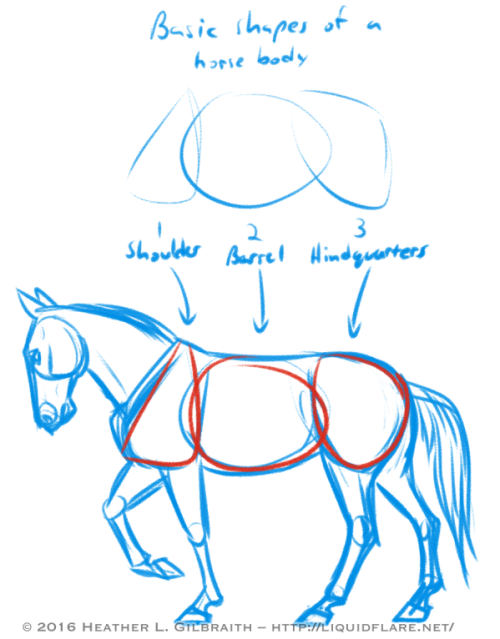

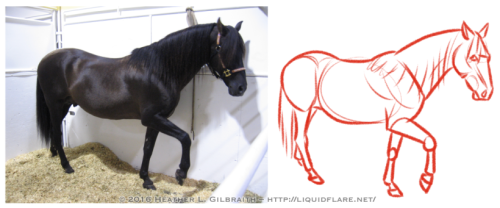
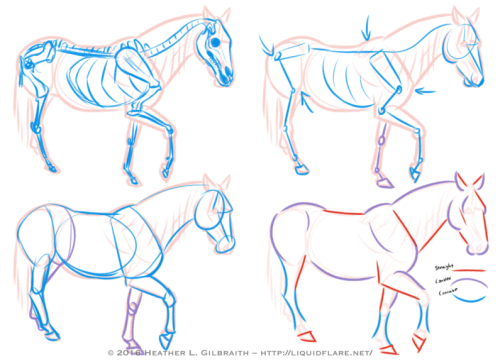
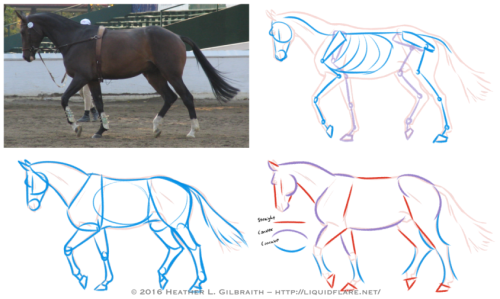
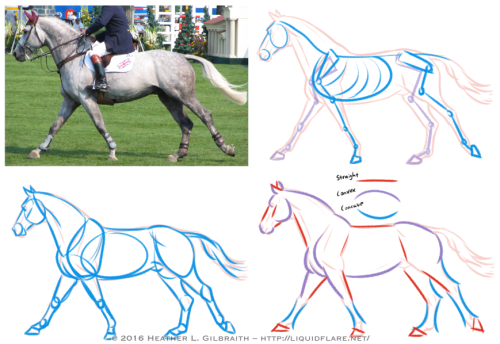
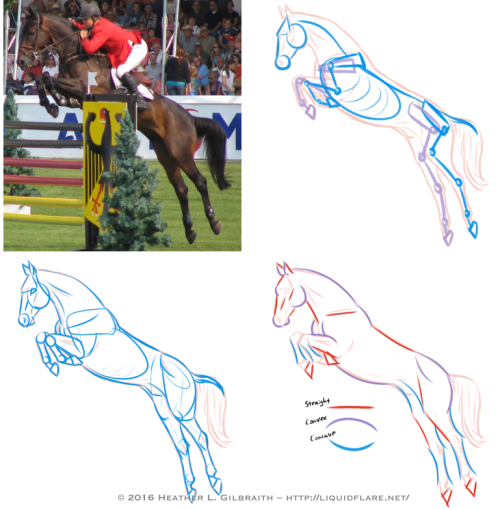
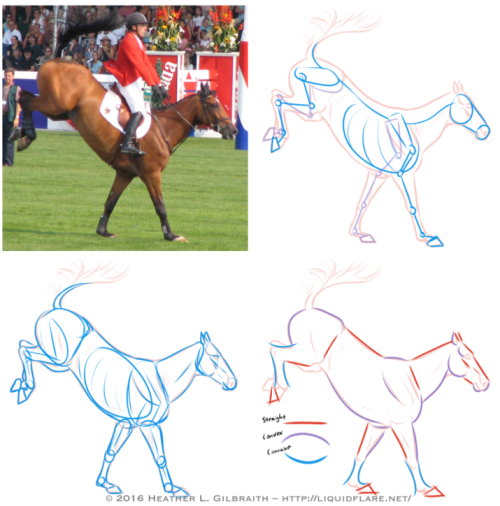
– Horse Drawing Tips –
Hello, all! I thought I’d put this together to try and give people a place to start when trying to learn about and understand horse anatomy. Drawing horses, like anything else, definitely requires some work and observation to be able to draw confidently, but some of the these ideas/tips can help you find ways of analyzing references and simplifying forms to make the journey easier. Drawing horses doesn’t have to be scary! Read on for some notes on the drawings above…
Basic Shapes of a horse body:
Use these shapes to help you block in the body forms of your horse and to help you simplify the anatomy of the horses you draw. When you study photos of horses, try to see how these shapes move/stretch in relation to the horse’s pose/action.
Horse Anatomy Studies:
1) Standing/Walking:
a. Reference photo – Start with a photograph that you’d like to study. Try to choose a clear one with visible anatomy (obscured as little as possible) and interesting shapes.
b. Outline – The outline gives me a point to start from to analyze the anatomy of the horse from the photograph. I use it as a guide for the next few steps.
c. Skeleton – The skeleton usually takes too much time to do with every photograph, but it’s very helpful to be aware of the bones of a horse, so you know what you’re working with. Do a few of these with a drawing/photograph of a horse skeleton for reference and familiarize yourself!
d. Simplified Skeleton – Then draft out a quick, “simplified” skeleton. Try to block out the important angles, joints, and important anatomy reference points, such as the shoulder/elbow bones and the hip/knee bones. These angles will go a long way to helping you get the proper feel for a horse and the way its body naturally moves.
e. Simple Block Shapes – From there, block out the forms of the horse. Keep the skeleton in mind, but be aware of the masses of muscle and fat that moves with and covers the bones. Find ways to simplify the shapes that work for you, and try using these shapes in the future when blocking in a drawing of a horse.
f. Curves vs. Straights – Juxtaposing curved (both concave and convex) and straight lines helps to emphasize the anatomy, and add a pleasing sense of rhythm to your drawing. Experiment with emphasizing convex curves vs. concave curves, or straights against curves, etc., to get a look that is pleasing to you and also compliments the horse’s anatomy.
2) The Trot: The trot is a horse’s natural “jogging” gait, the next gait up from a walk. When trotting, the horse almost always has at least one, usually two, hooves on the ground at any moment. Remember that in most cases, horses walk/trot/canter/etc. with opposite legs moving together or in sequence; for example, right front leg raised, and left back leg raised, while the other two legs (left front leg and right front leg) are bearing the weight. Remember this when sketching your horse’s pose! (The exceptions to this are pacers and Icelandic horses doing the “tolt”, feel free to look them up!) When drawing this gait, it is sometimes helpful to emphasize the two opposing legs that mirror each other; with two legs straight/weight-bearing, and too legs extended/bent/moving. Keep the opposing legs in tandem with one another and you’ll have this gait down!
3) The Canter/gallop: Cantering is a horse’s natural running gait. In this gait it’s possible for all of a horse’s hooves to leave the ground for a moment with each stride. If a canter is a horse’s equivalent a human’s run, then a gallop is a sprint; in a gallop a horse reaches its maximum stride length and speed, though they don’t have the endurance to keep a full-on gallop up for long. When drawing the canter, watch out for which legs are bearing the weight and use that the guide you. (In my photo example, the right back leg and the left front leg are currently bearing the weight, with the right front leg about to take the weight to allow the left front leg to raise. Ugh, complicated…!)
4) The Jump: It’s when jumping that a horse reaches its maximum “stretch”! Keep in mind that a horse’s back is not very flexible (which is what makes them great to ride!), so try to keep that spine straighter/stiffer than you would for a dog or a cat. Bending the horse’s spine too much will start to make it look broken, or at the very least, very old and decrepit, as horse’s spine starts to bend/sag with age.
5) The Landing: To emphasize the weight of a horse coming down on its front hooves, be sure to bend it’s “toe joint”, or pastern, so that its fetlock or knuckle joint is nearly touching the ground. Let that joint bend to absorb the shock of the landing!

Try to avoid these common anatomy mistakes when drawing horses. Study photos and the horse’s skeleton/anatomy to avoid these! (And seriously, please forgive how horrible these drawings are! I literally whipped them up in only a few minutes, haha…)
Afficher davantage
More Posts from Zelo-ref and Others








A compilation of snow/winter gifs. Here are similar compilations featured on @sixpenceee you may enjoy:
Compilation of Calming/Floral Gifs
Compilation of Landscape/Nature Gifs
Compilation of Space/Sky Gifs
Compilation of Pixel Art
Compilation of Cute Transparent Pixels
Compilation of Creepy Pixel Art
Dealing with ART BLOCK

INTRODUCTION
Path of art is a path of struggle. A path that one time can be easy and appealing, quickly leading you to its destination, but the other time it can be full of obstacles or even blocks… art blocks.
What is an art block? Various artists from around the world seem to refer to ‘art blocks’ every time they have troubles producing new works. The cause and process of typical art block will differ from one person to another, but generally speaking: everything that prevents you from creating art, despite all the opportunities, can be called an art block. Although very common, art blocks can lead to some serious issues like loss of confidence, no motivation to improve or even fear of drawing (to avoid disappointing oneself).

In this little article I’ll do my best to tell you how to deal with this biggest artistic illness!
Afficher davantage
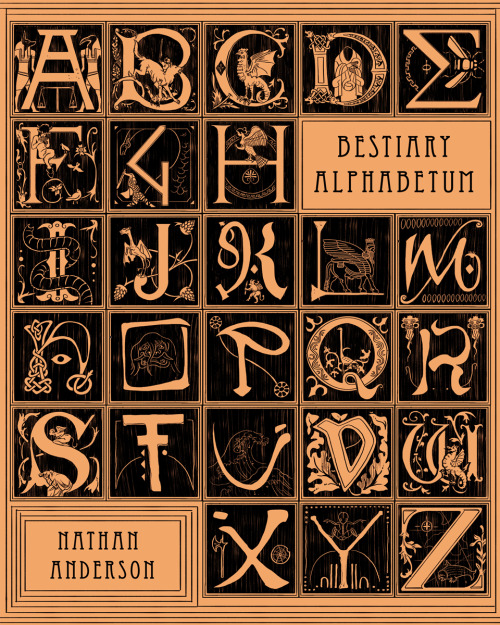
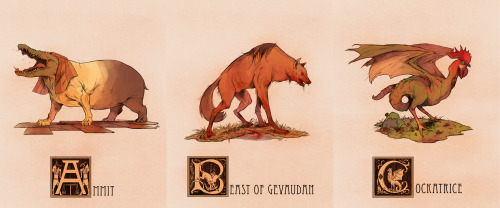


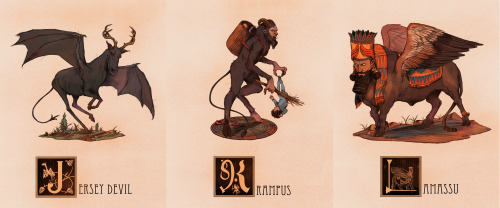


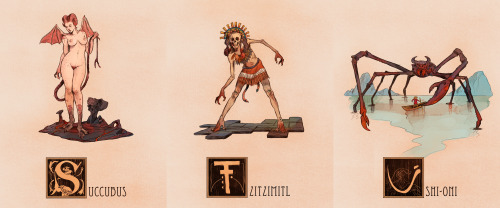
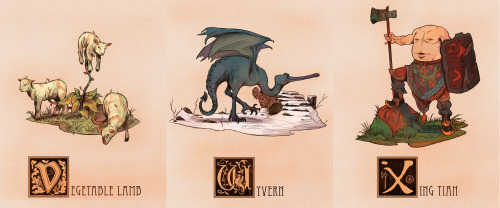

They’re all here! I took it upon myself to create an illustration of a Mythological creature or character for every letter of the alphabet, trying to span across a multitude of cultures and creature-types. Another thing I wanted to accomplish with this project was to find some the more unusual and/or obscure creatures that don’t get as much representation in artwork. Individual Tumblr Posts with said creatures’ descriptions are below.
Again, I’ll be making this into a small run of books as a way to test the waters. If there’s more demand for a larger run, I’ll definitely be looking into it!
All REBLOGS are appreciated!
Bestiary Alphabetum: Each Entry is clickable!
A is for Ammit
B is for The Beast of Gevaudan
C is for Cockatrice
D is for Dullahan
E is for Eurynomos
F is for Faun
G is for Grendel
H is for Harpy
I is for Indus Worm
J is for Jersey Devil
K is for Krampus
L is for Lamassu
M is for Manticore
N is for Nuckelavee
O is for Otoroshi
P is for Penanggalan
Q if for Questing Beast
R is for Rangda
S is for Succubus
T is for Tzitzimitl
U is for Ushi-Oni
V is for Vegetable Lamb
W is for Wyvern
X is for Xing Tian
Y is for Yara-Ma-Yha-Who
Z is for Ziphius
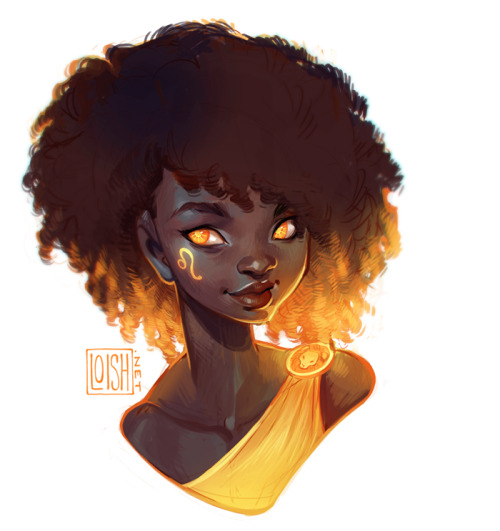
another commission drawn for one of the backers of my (now closed) artbook kickstarter campaign! this one’s for Talia, who wanted a character with lots of references to the leo zodiac sign.
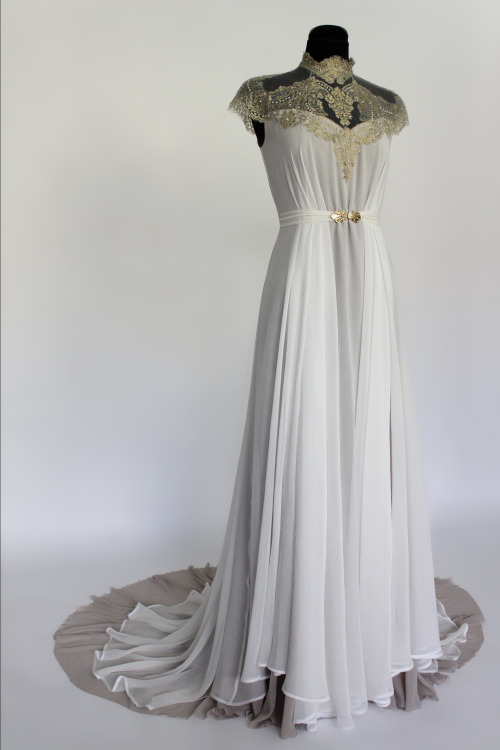
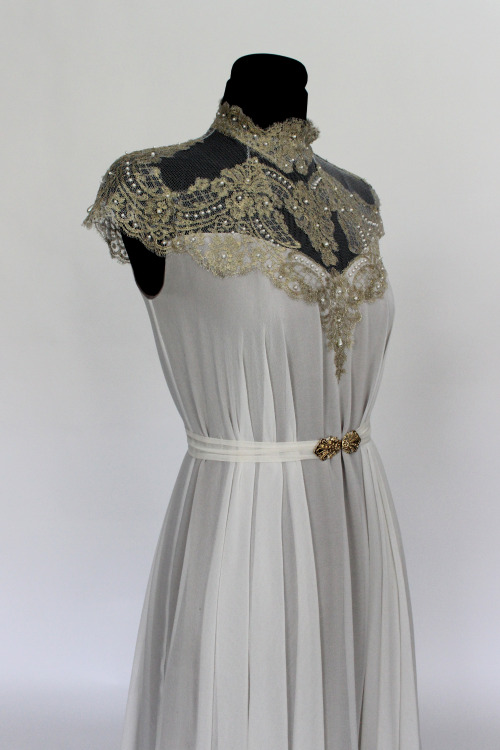
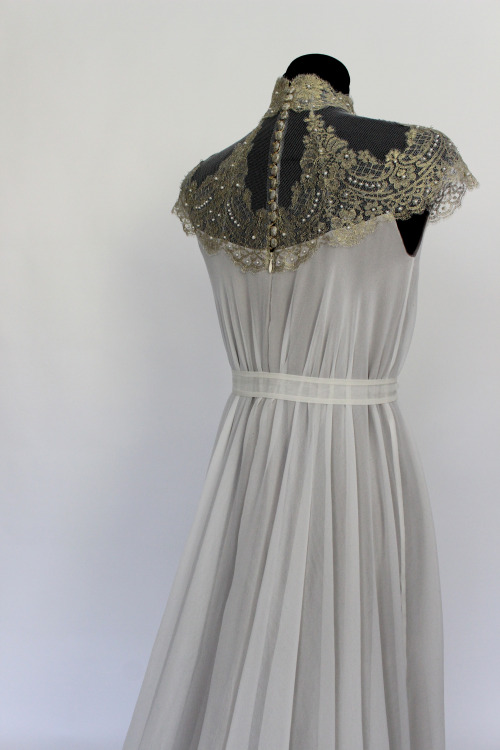
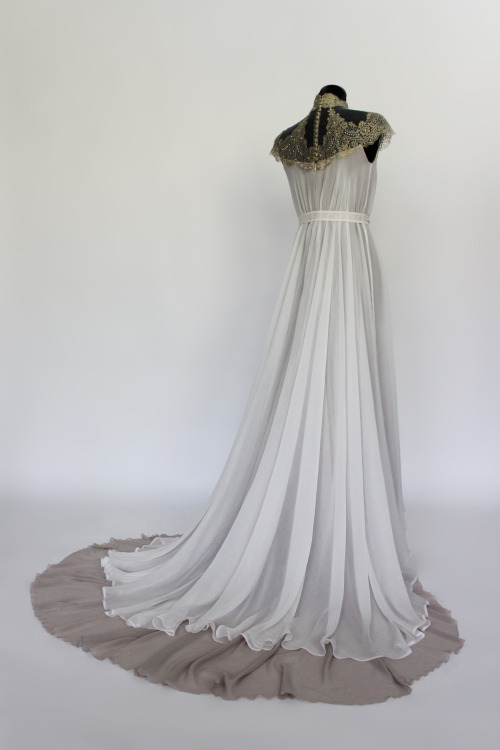
Art Nouveau inspired wedding dress, made of 3 layers of golden shimmering taupe chiffon, upper layer of pure silk, and golden French wedding lace along the neckline embellished with numerous little pearls.
Mail to lindafriesen.info@gmail.com if you’d like to have a unique custom made wedding dress designed for you.
www.facebook.com/LINDAFRIESEN.couture
I've been thinking about this for a while, but how effective is full plate armour? Was it actually a good way to defend yourself?
Short Answer: Yes.
Here’s a general rule: People in the past were ignorant about a lot of things, but they weren’t stupid. If they used something, chances are they had a good reason. There are exceptions, but plate armor is not one of them.
Long Answer:
For a type of armor, no matter what it is, to be considered effective, it has to meet three criteria.
The three criteria are: Economic Efficiency, Protectiveness, and Mobility.
1. Is it Economically Efficient?
Because of the nature of society in the Middle Ages, what with equipment being largely bring-it-yourself when it came to anybody besides arrowfodder infantry who’d been given one week of training, economic efficiency was a problem for the first couple of decades after plate armor was introduced in France in the 1360s. It wasn’t easy to make, and there wasn’t really a ‘science’ to it yet, so only the wealthiest of French soldiers, meaning knights and above, had it; unless of course somebody stole it off a dead French noble. The Hundred Years War was in full swing at the time, and the French were losing badly to the English and their powerful longbows, so there were plenty of dead French nobles and knights to go around. That plate armor was not very economically efficient for you unless you were a rich man, though, it also was not exactly what we would call “full” plate armor.

Above: Early plate armor, like that used by knights and above during the later 1300s and early 1400s.


Above: Two examples of what most people mean when they say “full” plate armor, which would have been seen in the mid to late 1400s and early 1500s.
Disclaimer: These are just examples. No two suits of armor were the same because they weren’t mass-produced, and there was not really a year when everybody decided to all switch to the next evolution of plate armor. In fact it would not be improbably to see all three of these suits on the same battlefield, as expensive armor was often passed down from father to son and used for many decades.
Just like any new technology, however, as production methods improved, the product got cheaper.

Above: The Battle of Barnet, 1471, in which everybody had plate armor because it’s affordable by then.
So if we’re talking about the mid to late 1400s, which is when our modern image of the “knight in shining armor” sort of comes from, then yes, “full” plate armor is economically efficient. It still wasn’t cheap, but neither are modern day cars, and yet they’re everywhere. Also similar to cars, plate armor is durable enough to be passed down in families for generations, and after the Hundred Years War ended in 1453, there was a lot of used military equipment on sale for cheap.
2. Is it Protective?
This is a hard question to answer, particularly because no armor is perfect, and as soon as a new, seemingly ‘perfect’ type of armor appears, weapons and techniques adapt to kill the wearer anyway, and the other way around. Early plate armor was invented as a response to the extreme armor-piercing ability of the English longbow, the armor-piercing ability of a new kind of crossbow, and advancements in arrowhead technology.

Above: The old kind of arrowhead, ineffective against most armor.

Above: The new kind of arrowhead, very effective at piercing chainmaille and able to pierce plate armor if launched with enough power.

Above: An arrow shot from a “short” bow with the armor-piercing tip(I think it’s called a bodkin tip) piercing a shirt of chainmaille. However, the target likely would have survived since soldiers wore protective layers of padding underneath their armor, so if the arrow penetrated skin at all, it wasn’t deep. That’s Terry Jones in the background.

Above: A crossbow bolt with the armor piercing tip penetrating deep through the same shirt of chainmaille. The target would likely not survive.

Above: A crossbow bolt from the same crossbow glancing off a breastplate, demonstrating that it was in fact an improvement over wearing just chainmaille.
Unfortunately it didn’t help at all against the powerful English longbows at close range, but credit to the French for trying. It did at least help against weaker bows.
Now for melee weapons.
It didn’t take long for weapons to evolve to fight this new armor, but rarely was it by way of piercing through it. It was really more so that the same weapons were now being used in new ways to get around the armor.


Above: It’s a popular myth that Medieval swords were dull, but they still couldn’t cut through plate armor, nor could they thrust through it. Your weapon would break before the armor would. Most straight swords could, however, thrust through chainmaille and anything weaker.
There were three general answers to this problem:
1. Be more precise, and thrust through the weak points.


Above: The weak points of a suit of armor. Most of these points would have been covered by chainmaille, leather, thick cloth, or all three, but a sword can thrust through all three so it doesn’t matter.
To achieve the kind of thrusting accuracy needed to penetrate these small gaps, knights would often grip the blade of their sword with one hand and keep the other hand on the grip. This technique was called “half-swording”, and you could lose a finger if you don’t do it right, so don’t try it at home unless you have a thick leather glove to protect you, as most knights did, but it can also be done bare-handed.


Above: Examples of half-swording.
2. Just hit the armor so fucking hard that the force carries through and potentially breaks bones underneath.
Specialty weapons were made for this, but we’ll get to them in a minute. For now I’m still focusing on swords because I like how versatile the European longsword is.

Above: A longsword. They’re made for two-handed use, but they’re light enough to be used effectively in one hand if you’d like to have a shield or your other arm has been injured. Longswords are typically about 75% of the height of their wielders.
Assuming you’re holding the sword pointing towards the sky, the part just above the grip is called the crossguard, and the part just below the grip is called the pommel. If you hold the sword upside-down by the blade, using the same careful gripping techniques as with half-swording, you can strike with either the crossguard or the pommel, effectively turning the sword into a warhammer. This technique was called the Murder Stroke, and direct hits could easily dent plate armor, and leave the man inside bruised, concussed, or with a broken bone.

Above: The Murder Stroke as seen in a Medieval swordfighting manual.
Regular maces, hammers, and other blunt weapons were equally effective if you could get a hard enough hit in without leaving yourself open, but they all suffered from part of the plate armor’s intelligent design. Nearly every part of it was smooth and/or rounded, meaning that it’s very easy for blows to ‘slide’ off, which wastes a lot of their power. This makes it very hard to get a ‘direct’ hit.
Here come the specialized weapons to save the day.

Above: A lucerne, or claw hammer. It’s just one of the specialized weapons, but it encompasses all their shared traits so I’m going to only list it.
These could be one-handed, two-handed, or long polearms, but the general idea was the same. Either crack bones beneath armor with the left part, or penetrate plate armor with the right part. The left part has four ‘prongs’ so that it can ‘grip’ smooth plate armor and keep its force when it hits without glancing off. On the right side it as a super sturdy ‘pick’, which is about the only thing that can penetrate the plate armor itself. On top it has a sharp tip that’s useful for fighting more lightly armored opponents.
3. Force them to the ground and stab them through the visor with a dagger.
This one is pretty self-explanatory. Many conflicts between two armored knights would turn into a wrestling match. Whoever could get the other on the ground had a huge advantage, and could finish his opponent, or force him to surrender, with a dagger.
By now you might be thinking “Dang, full plate armor has a lot of weaknesses, so how can it be called good armor?”
The answer is because, like all armor is supposed to do, it minimizes your target area. If armor is such that your enemy either needs to risk cutting their fingers to target extremely small weak points, bring a specialized weapons designed specifically for your armor, or wrestle you to the ground to defeat you, that’s some damn good armor. So yes, it will protect you pretty well.

Above: The red areas represent the weak points of a man not wearing armor.
Also, before I move on to Mobility, I’m going to talk briefly about a pet-peeve of mine: Boob-plates.
If you’re writing a fantasy book, movie, or video game, and you want it to be realistically themed, don’t give the women boob-shaped armor. It wasn’t done historically even in the few cases when women wore plate armor, and that’s because it isn’t as protective as a smooth, rounded breastplate like you see men wearing. A hit with any weapon between the two ‘boobs’ will hit with its full force rather than glancing off, and that’ll hurt. If you’re not going for a realistic feel, then do whatever you want. Just my advice.

Above: Joan of Arc, wearing properly protective armor.
An exception to this is in ancient times. Female gladiators sometimes wore boob-shaped armor because that was for entertainment and nobody cared if they lived or died. Same with male gladiators. There was also armor shaped like male chests in ancient times, but because men are more flat-chested than women, this caused less of a problem. Smooth, rounded breastplates are still superior, though.
3. Does it allow the wearer to keep his or her freedom of movement?
Okay, I’ve been writing this for like four hours, so thankfully this is the simplest question to answer. There’s a modern myth that plate armor weighed like 700 lbs, and that knights could barely move in it at all, but that isn’t true. On a suit of plate armor from the mid to late 1400s or early 1500s, all the joints are hinged in such a way that they don’t impede your movement very much at all.
The whole suit, including every individual plate, the chainmaille underneath the plates, the thick cloth or leather underneath the chainmaille, and your clothes and underwear all together usually weighed about 45-55 lbs, and because the weight was distributed evenly across your whole body, you’d hardly feel the weight at all. Much heavier suits of armor that did effectively ‘lock’ the wearer in place did exist, but they never saw battlefield use. Instead, they were for showing off at parades and for jousting. Jousting armor was always heavier, thicker, and more stiffly jointed than battlefield armor because the knight only needed to move certain parts of his body, plus being thrown off a horse by a lance–even a wooden one that’s not meant to kill–has a very, very high risk of injury.
Here’s a bunch of .gifs of a guy demonstrating that you can move pretty freely in plate armor.



Above: Can you move in it? Yes.
Here are links to the videos that I made these .gifs from:
https://www.youtube.com/watch?v=vi757-7XD94
https://www.youtube.com/watch?v=NhWFQtzM4r0
https://www.youtube.com/watch?v=5hlIUrd7d1Q
Do you have any tips for drawing round ladies? :D
Hiya anon!
Well, I’m still learning myself, but here’s a few tips I usually keep in mind!
1.) “Fat” is not just a big belly!

Fat distributes everywhere, but not necessarily equally! Like at any weight, every body is different and has an unique shape! Some keep a hourglass shape, some become more pear-like, some are shaped like teardrops or apples… but the basic thing is, fat doesn’t just choose one place where it WON’T gather. It may not be as visible in some area compared to another, but in real life, it’s reeeeaaaaalllllyyyy rare to just find a person whose fat only stores in their bum, thighs and tits, leaving their waist, arms, neck and etc slim. Keep the body pleasant and thick all around, not just in the places where the weight-gain is the most imminent!
Keep the round shapes in mind!
2.) Rolls! Folds! What are they?



What are they? Not something to be afraid of, that’s for sure!
Basically, don’t hesitate to give your characters fat rolls. Skin folds, stretches and moves along with the body, and so does the fat under it! However, a lot of people who draw rolls tend to give the character many super small ones — this is not how rolls work! Usually, the thicker the person, the thicker the rolls — they increase in size, not necessarily in number.
Rolls are the most preminent in places where the body moves the most, AKA the joints. Fat folds over itself and creates creases and ‘rolls’.
3.) HOWEVER….
(No references here, sorry!!!)
When we age, our skin loses its elasticity and it can’t keep the rolls and folds thick and perky. In our youth, our weight can be held up way better than in our elderly days due to the stength and adaptivity of our skin which disappears as we age. Thus, fat tends to droop lower with older people, and the rolls appear thinner. This can also happen if someone who has had a LOT of weight packed up suddenly losing a big chunk of it — the skin can’t adapt and will begin to “droop“ down and lower. Make sure to keep such factors in mind when drawing and planning how the weight of your characters should be carried!
And then, a lil tip that;
4.) Study references and real life!
If you yourself pack some weight or have access to internet, libraries or just life on the street, you will see how bodies at different weights and shapes work and move. Use references, see for yourself — try to find how fat distributes and especially, HOW IT FOLDS! Folds and rolls seem to be one of the biggest problems many have while drawing thicker characters, and that’s ok — we’re taught as a society that fatrolls are inherently bad and disgusting, therefore there are not many situations where we’d find ourselves just… staring and studying how the fat in our bodies works and moves. You’ll learn quickly, though!
I’m still learning myself, but especially since every body is different and the weight we pack acts in unique ways, it can be really challenging to find the ‘absolute’ right way to draw thicker characters. Don’t give up! You’ll get the hang of it eventually!!
-
 leiliisgone liked this · 2 months ago
leiliisgone liked this · 2 months ago -
 yourdrugisafartbreaker reblogged this · 2 months ago
yourdrugisafartbreaker reblogged this · 2 months ago -
 yourdrugisafartbreaker liked this · 2 months ago
yourdrugisafartbreaker liked this · 2 months ago -
 classifiedprojectciel liked this · 2 months ago
classifiedprojectciel liked this · 2 months ago -
 alpaca-dave liked this · 2 months ago
alpaca-dave liked this · 2 months ago -
 linztheanimelover reblogged this · 2 months ago
linztheanimelover reblogged this · 2 months ago -
 linztheanimelover liked this · 2 months ago
linztheanimelover liked this · 2 months ago -
 killianariel18100 liked this · 2 months ago
killianariel18100 liked this · 2 months ago -
 sheepheadfred reblogged this · 2 months ago
sheepheadfred reblogged this · 2 months ago -
 tempusedax-rerum liked this · 2 months ago
tempusedax-rerum liked this · 2 months ago -
 tedret reblogged this · 2 months ago
tedret reblogged this · 2 months ago -
 ratdesk reblogged this · 2 months ago
ratdesk reblogged this · 2 months ago -
 ratreceptionist reblogged this · 2 months ago
ratreceptionist reblogged this · 2 months ago -
 ratdesk liked this · 2 months ago
ratdesk liked this · 2 months ago -
 ghostly-lynx liked this · 2 months ago
ghostly-lynx liked this · 2 months ago -
 valose liked this · 2 months ago
valose liked this · 2 months ago -
 incognetomisquito reblogged this · 2 months ago
incognetomisquito reblogged this · 2 months ago -
 incognetomisquito liked this · 2 months ago
incognetomisquito liked this · 2 months ago -
 tansypansydandy liked this · 2 months ago
tansypansydandy liked this · 2 months ago -
 divinedirestar liked this · 2 months ago
divinedirestar liked this · 2 months ago -
 redtheraccoon reblogged this · 2 months ago
redtheraccoon reblogged this · 2 months ago -
 redtheraccoon liked this · 2 months ago
redtheraccoon liked this · 2 months ago -
 silver-tounges-and-golden-lies reblogged this · 2 months ago
silver-tounges-and-golden-lies reblogged this · 2 months ago -
 silver-tounges-and-golden-lies liked this · 2 months ago
silver-tounges-and-golden-lies liked this · 2 months ago -
 marsupials-of-mars reblogged this · 2 months ago
marsupials-of-mars reblogged this · 2 months ago -
 oswaldepic reblogged this · 2 months ago
oswaldepic reblogged this · 2 months ago -
 oswaldepic liked this · 2 months ago
oswaldepic liked this · 2 months ago -
 boolahboosh liked this · 2 months ago
boolahboosh liked this · 2 months ago -
 fallforfail reblogged this · 2 months ago
fallforfail reblogged this · 2 months ago -
 fallingforspring liked this · 2 months ago
fallingforspring liked this · 2 months ago -
 apinklion01 reblogged this · 2 months ago
apinklion01 reblogged this · 2 months ago -
 apinklion01 liked this · 2 months ago
apinklion01 liked this · 2 months ago -
 speedygonza liked this · 2 months ago
speedygonza liked this · 2 months ago -
 gabidogragoata liked this · 2 months ago
gabidogragoata liked this · 2 months ago -
 jataibreyn liked this · 3 months ago
jataibreyn liked this · 3 months ago -
 heartpalpitation liked this · 4 months ago
heartpalpitation liked this · 4 months ago -
 slainesthrone liked this · 4 months ago
slainesthrone liked this · 4 months ago -
 kandayuu liked this · 5 months ago
kandayuu liked this · 5 months ago -
 xiulric reblogged this · 5 months ago
xiulric reblogged this · 5 months ago -
 melodromacy liked this · 5 months ago
melodromacy liked this · 5 months ago -
 luna-loveboop liked this · 6 months ago
luna-loveboop liked this · 6 months ago -
 dephoraowo liked this · 7 months ago
dephoraowo liked this · 7 months ago -
 moisources reblogged this · 8 months ago
moisources reblogged this · 8 months ago -
 edgynoise liked this · 10 months ago
edgynoise liked this · 10 months ago -
 necropolitan-fairy reblogged this · 10 months ago
necropolitan-fairy reblogged this · 10 months ago -
 necropolitan-fairy liked this · 10 months ago
necropolitan-fairy liked this · 10 months ago -
 zsofiarosebud liked this · 10 months ago
zsofiarosebud liked this · 10 months ago -
 jar-jar-ate reblogged this · 10 months ago
jar-jar-ate reblogged this · 10 months ago -
 jar-jar-ate reblogged this · 10 months ago
jar-jar-ate reblogged this · 10 months ago -
 jar-jar-ate liked this · 10 months ago
jar-jar-ate liked this · 10 months ago






















